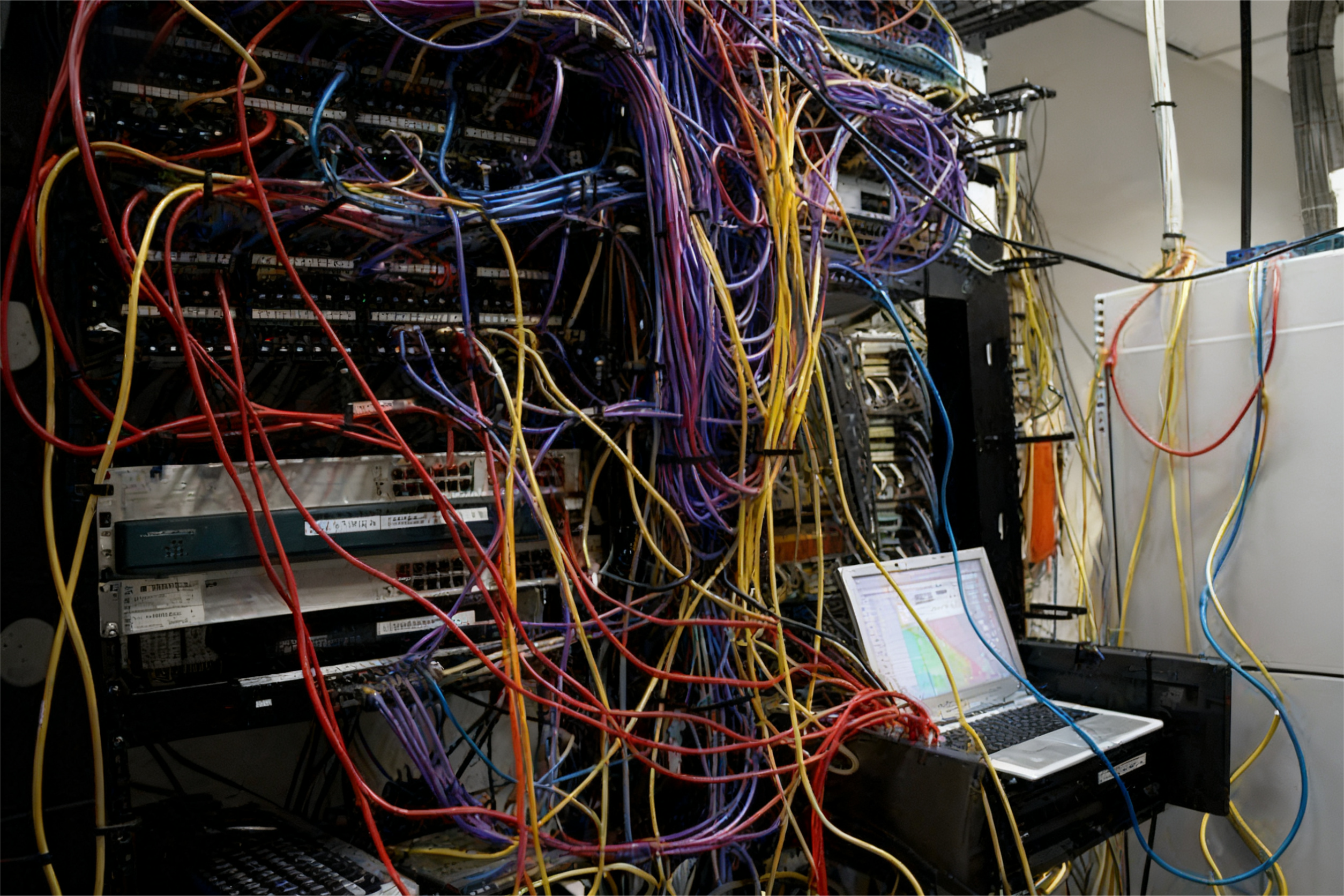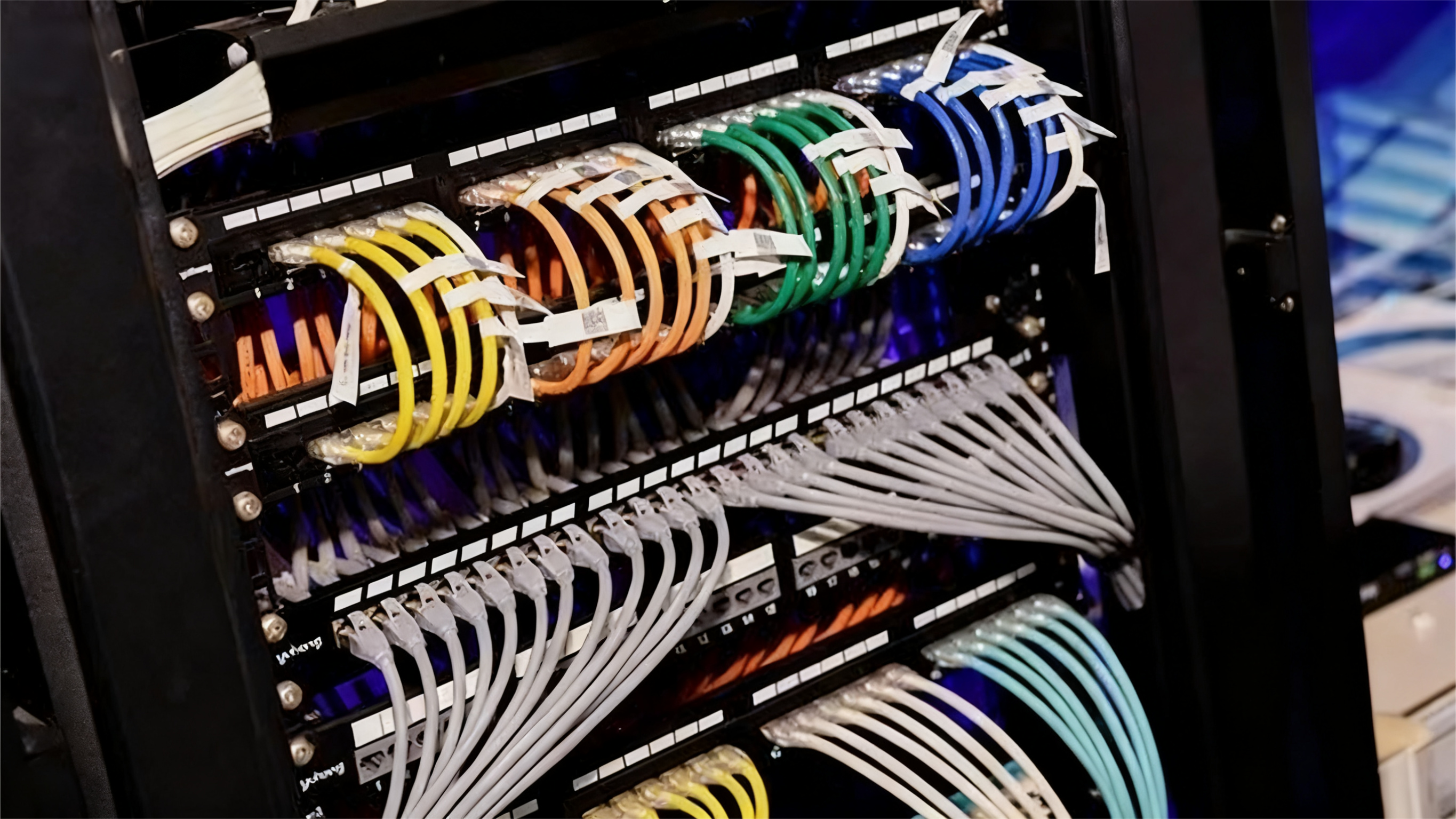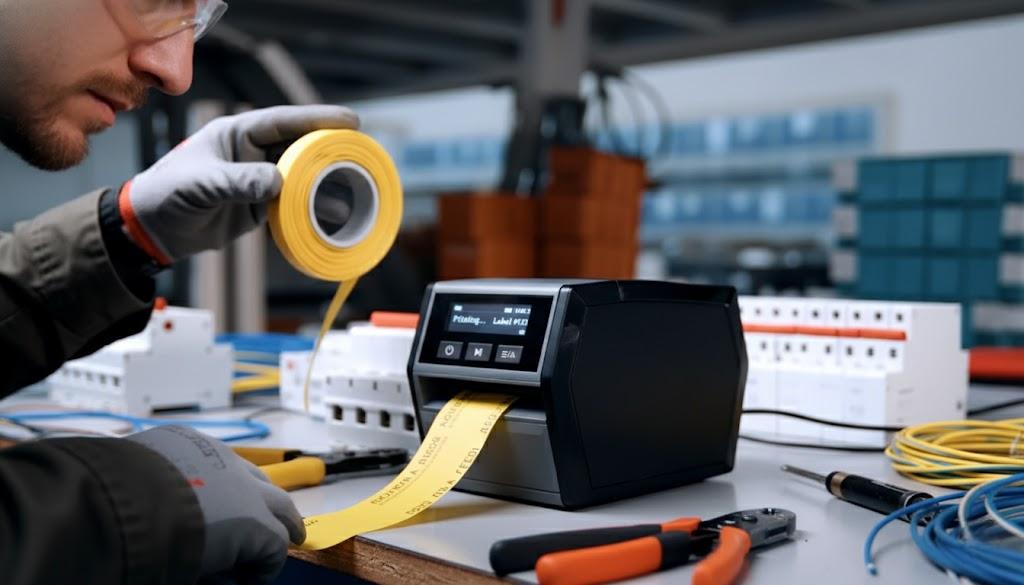Network Rack Cable Management: Build Efficient And Reliable Data Center Infrastructure
As data centers develop towards high density and automation, the cable layout inside the cabinet has become a key factor affecting network stability and operation and maintenance efficiency.
A well-designed network rack cable management system not only makes cabling neater but also improves heat dissipation efficiency, reduces the risk of failure, and leaves room for future expansion.
This article systematically explains the core methods and implementation points for network cabinet cable management. It also introduces how professional identification tools such as thermal transfer label printers can help companies achieve more efficient and traceable equipment and cable management.

Why Network Rack Cable Management Matters?
In modern data centers and communication rooms, the number of network devices is huge: switches, routers, servers, and patch panels are stacked layer upon layer.
If there is a lack of scientific network rack cable management, even high-performance equipment may cause the following problems due to messy wiring:
- The airflow is blocked, resulting in poor heat dissipation of the equipment
- Signal interference affects network performance
- The wiring is messy, and maintenance and troubleshooting are time-consuming
- Cable twisting and misinsertion increase the risk of disconnection
Neat and structured cabinet cabling not only ensures the stable operation of the network but also significantly enhances maintenance efficiency, system scalability and the professional image of the data center.
What Is Network Rack Cable Management
Network Rack Cable Management refers to the systematic process of planning, laying out, securing and labeling data cables and power cables inside the cabinet.
Common management components include:
Horizontal Cable Manager: Used to organize the jumpers at the device ports to keep the front end neat.
Vertical Cable Manager: Used to centralize trunk cables and optimize wiring paths.
Cable Rings & Trays: Helps cables to be arranged in layers to reduce entanglement and crossing.
Labeling System: Use this to quickly identify ports and cables and record connection relationships.
Combining these elements allows you to build a secure, efficient, and traceable cabinet cabling system.

Benefits of Effective Cable Management
Scientific cabinet cabling not only contributes to a neat appearance but is also crucial for ensuring system performance and operational safety.
Five key benefits of implementing standardized network rack cable management:
- Improve heat dissipation efficiency
Reasonable wiring can ensure smooth airflow, prevent equipment from overheating and extend its service life. - Simplify the maintenance process
Organized cable layout and clear labeling allow for quick cable location, making maintenance and troubleshooting more efficient. - Support future expansion
Structured cabling allows for greater flexibility by eliminating the need to rewire the entire system when adding new devices or ports. - Enhance professional image
The neat cabinets demonstrate management standards and technical strength. - Reduce downtime risk
Prevent disconnection caused by entanglement, pulling and wrong insertion.
Best Practices for Network Rack Cable Management
To achieve a long-term, efficient, and maintainable cabling system, it is recommended to follow these network closet cable management best practices:
| Key points of practice | Explanation |
| Pre-construction planning | Clarify the wiring path, port number and label rules. |
| The data cable and the power cable are separated | Reduce electromagnetic interference (EMI). |
| Double-ended label identification | Heat- and moisture-resistant thermal transfer labels should be used on both ends of each cable to ensure long-term identification. |
| Select the appropriate cable length | Avoid being too long to cause accumulation and too short to cause pulling. |
| Regular inspection and organization | It is recommended to conduct a cabinet cable inspection once every quarter. |
Professional advice: Using a Thermal Transfer Label Printer can print high-contrast, high-temperature and moisture-resistant cable labels, which can significantly reduce subsequent maintenance costs.
This type of label is widely used in data centers, communication rooms and industrial scenarios, ensuring that the identification information is clear and traceable for a long time.

Digital Identification in Cabinet Cable Management
As cabinet density increases and the number of assets grows, traditional manual labeling methods can no longer meet high-frequency maintenance and traceability needs.
The QR codes or RFID labels printed by the Thermal Transfer Label Printer can be seamlessly integrated with the digital identification system to achieve visual and intelligent management of cabinet resources.
Main Advantages of Digital Identification Systems:
- Supports QR codes or RFID tags for rapid scanning and identification of cable connections.
- Real-time synchronization with the Resource Management System (RMS).
- Automated recording and traceability facilitate auditing and O&M analysis.
- Improves on-site O&M efficiency and reduces manual errors.
This digital management approach has become an important trend in the management of modern communication and data center infrastructure.
Summary: Clean wiring makes the network smarter
Efficient network rack cable management is the key to ensuring the stable operation of data centers..
When combined with digital identification systems and thermal transfer label printers, enterprises can not only achieve more efficient cable management and resource traceability, but also build an intelligent and scalable network infrastructure system.
MakeID offers a range of industrial-grade label printers and cable identification solutions specifically designed for the telecommunications, IT and infrastructure industries, helping engineers simplify the identification process and enhance maintenance efficiency.
Learn more about how MakeID helps with intelligent cable management solutions.

